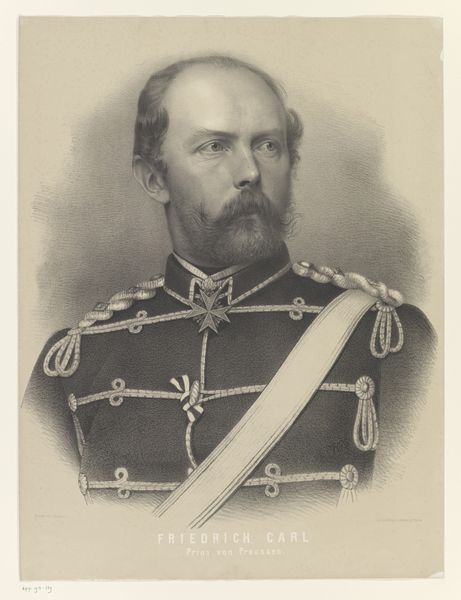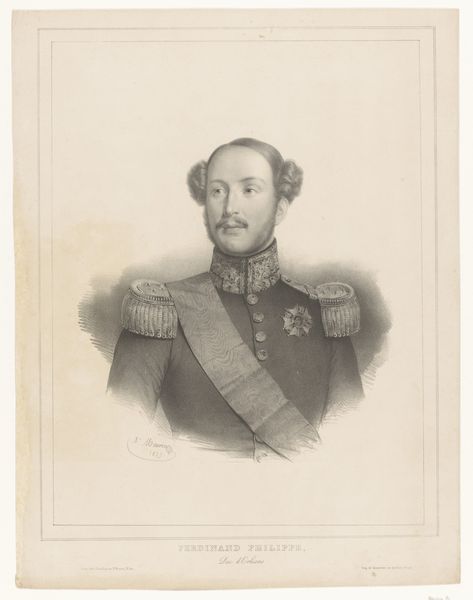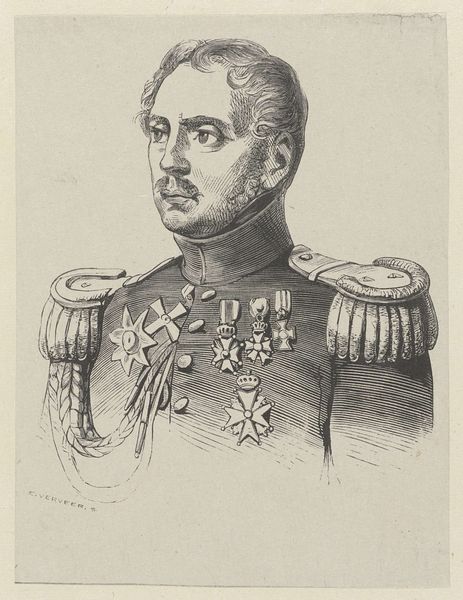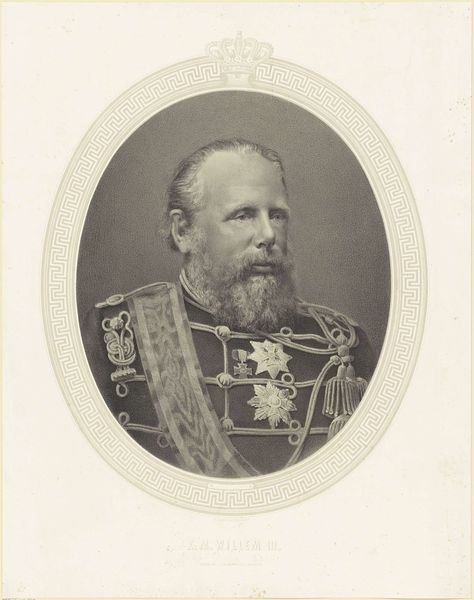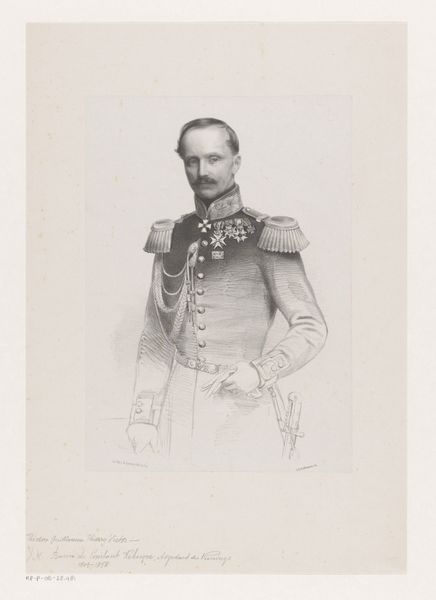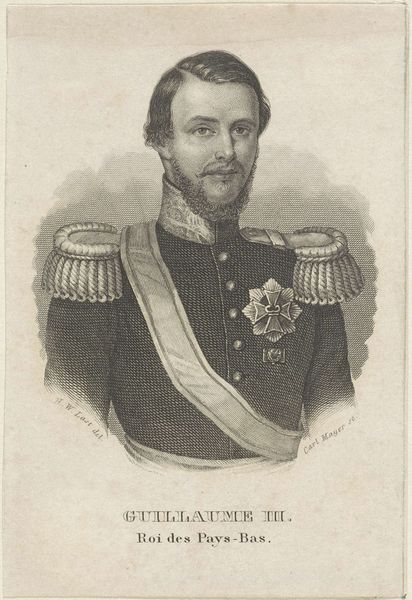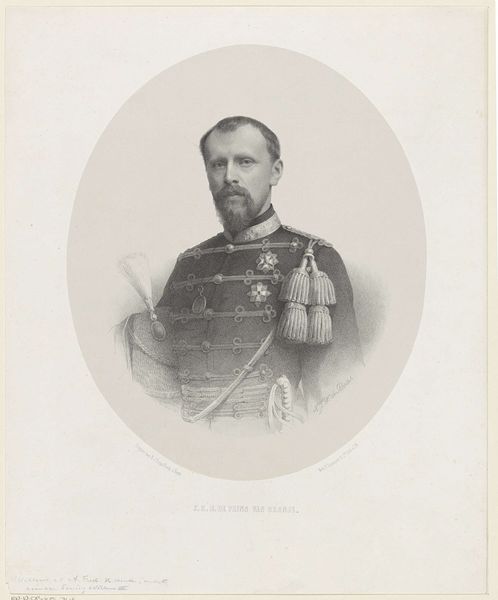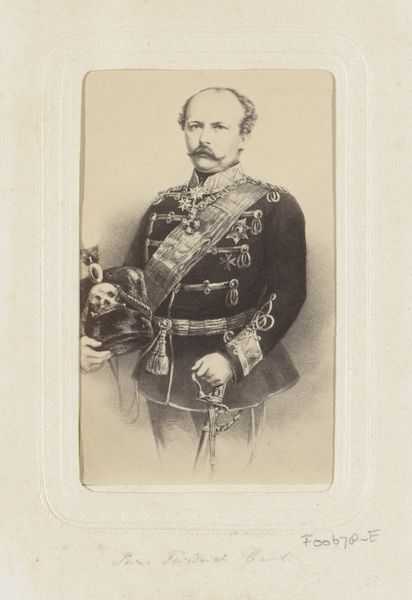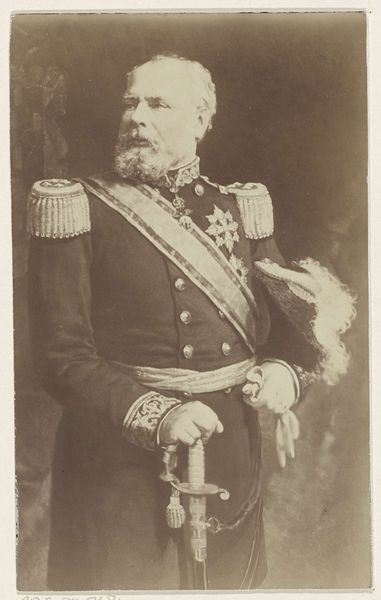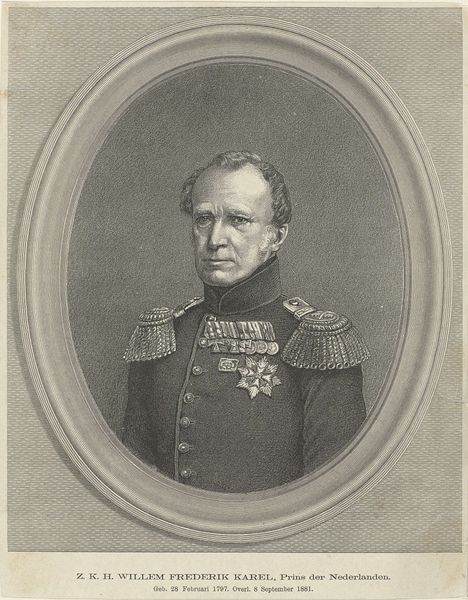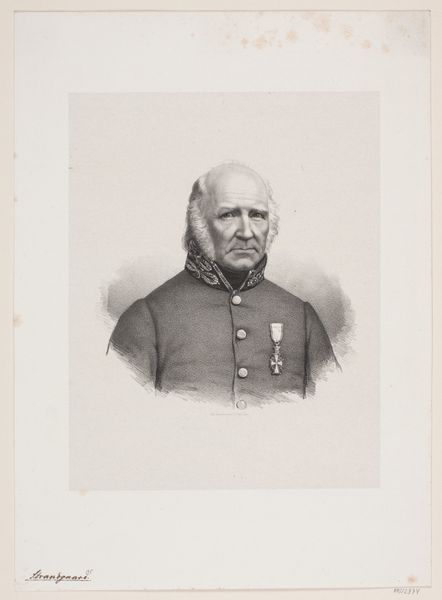
drawing, print, graphite
#
portrait
#
drawing
#
wedding photograph
# print
#
charcoal drawing
#
historical photography
#
romanticism
#
graphite
#
portrait drawing
#
history-painting
#
academic-art
#
realism
Dimensions: height 720 mm, width 560 mm
Copyright: Rijks Museum: Open Domain
Curator: Here we have a portrait of Wilhelm I, created sometime between 1832 and 1854 by Franz Chevalier. It’s a striking piece, isn’t it? Primarily rendered in graphite, characteristic of the period's artistic inclinations. Editor: It has a distinct somber feel, doesn’t it? There’s a formality that borders on imposing, amplified by the tight collar and abundance of medals. You immediately understand the presence and weight of the person. Curator: Precisely. This was a period deeply engaged with concepts of leadership and nationhood. Wilhelm I, after all, became the first German Emperor. His representation here reinforces the visual vocabulary of power prevalent at the time. Portraits like these were tools for shaping public image and conveying authority. Editor: Yes, but also consider how that imagery translates. Those decorations aren’t merely ornamental; they speak volumes about societal values and who is being celebrated within those parameters. We have to question whose narratives are elevated and at whose expense. What notions of masculinity or nationalism are actively reinforced? Curator: Certainly. And it’s important to remember the technical aspects as well. Chevalier’s handling of graphite here, particularly in depicting textures like the fabric and Wilhelm's elaborate beard, is remarkable. Such skill enhanced the perceived legitimacy and status associated with the sitter. Editor: While the artistic skill is undeniable, what resonates with me is that portraits such as this have contributed significantly to establishing and perpetuating a visual hierarchy of power. It becomes a question of how we reinterpret these images today, considering the power structures of their origin. Curator: So, reflecting on this portrait, it's apparent that understanding its context allows us to unpack not just artistic talent, but the cultural and political landscape it inhabited. Editor: I concur. Viewing this piece is an opportunity to confront the ongoing influence and complicated legacies surrounding such prominent historical figures and their lasting portrayal in art.
Comments
No comments
Be the first to comment and join the conversation on the ultimate creative platform.

